 |
 |
 |
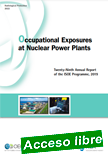 |
Occupational Exposures at Nuclear Power Plants
OECD - Nuclear Energy Agency ¦ NEA No. 7620 ¦ 2022 ¦ 144 pages
Since 1992, ISOE has provided a forum for radiological protection professionals from nuclear licensees and national regulatory authorities worldwide to share dose reduction information and operational experience aiming to improve the optimisation of radiological protection at nuclear power plants. As of 31 December 2019, the ISOE programme included 76 participating licensees (348 operating and 69 shutdown nuclear power units, as well 11 units under construction and/or commissioning) and 28 regulatory authorities in 31 countries.
|
The ISOE database gathers occupational exposure information for a total of 501 units, covering over 88% of the world’s operating commercial power reactors. While ISOE is well known for its occupational exposure data and analyses, the programme’s strength comes from its objective to share such information broadly among its participants. This 29th Annual Report of the Information System on Occupational Exposure presents the status of the ISOE programme for the calendar year 2019. The report includes global occupational exposure data and analyses collected and accomplished in 2019, as well as information on the programme achievements and principle events in participating countries.
|
 |
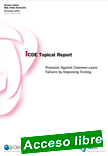 |
ICDE Topical Report: Provision Against Common-cause Failures by Improving Testing
OECD - Nuclear Energy Agency ¦ NEA NEA/CSNI/R(2019)5 ¦ November 2022 ¦ 58 pages
This report presents a study performed on a set of common-cause failure (CCF) events within the Nuclear Energy Agency (NEA) International Common-cause Failure Data Exchange (ICDE) Project. The topic was improving testing. The main objective of this topical report was to study CCF events where fault states or impairments could not be detected in normal recurrent tests because the scope of tests was insufficient or no appropriate tests existed.
|
The report is mainly intended for designers, operators and regulators to broaden their understanding on reducing CCF risks by improving testing and to provide insight into relevant failure mechanisms. It summarises the results of two data analysis workshops performed by the ICDE steering group, and presents CCF defence aspects for provision against CCFs by improving testing. The analysis included an assessment of the event parameters, event cause, coupling factor, detection method, corrective action and event severity.
|
 |
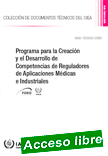 |
Programa para la Creación y el Desarrollo de Competencias de Reguladores de Aplicaciones Médicas e Industriales
Español ¦ IAEA-TECDOC-2005 ¦ 66 págs. ¦ Fecha de publicación: 2022
Esta publicación proporciona el esquema para establecer y fortalecer un programa de competencias del personal regulador en aplicaciones médicas e industriales de las fuentes de radiación y está basada en la experiencia operativa de los países miembros del Foro Iberoamericano de Organismos Reguladores Radiológicos y Nucleares (FORO).
|
Las directrices complementan el informe de seguridad n.º 79 del OIEA y cualquier país puede utilizarlas teniendo en cuenta un enfoque graduado.
|
 |
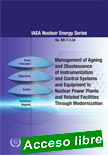 |
Management of Ageing and Obsolescence of Instrumentation and Control Systems and Equipment in Nuclear Power Plants and Related Facilities Through Modernization
IAEA Nuclear Energy Series No. NR-T-3.34 ¦ English ¦ STI/PUB/2030 ¦ 114 pages ¦ Date published: 2022
Ageing of instrumentation and control (I&C) equipment at nuclear facilities has the potential to degrade mechanisms, which can in turn reduce safety margins and increase operating and maintenance costs. Obsolescence of I&C equipment can compound matters as suitable replacements become difficult to source.
|
In 2019, the IAEA Technical Working Group on Nuclear Power Plant Instrumentation and Control acknowledged that relevant system and strategy guidance was required to implement modern technology at nuclear facilities. The purpose of this publication is to assist Member States in developing strategies to address ageing and obsolescence issues for I&C systems and it provides detail on modernization considerations and information from relevant recent operator experience. An appendix summarizes cable ageing management through condition monitoring, and several annexes describe Member States’ practices and experience with l&C ageing management and modernization.
|
 |
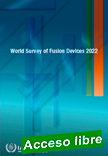 |
World Survey of Fusion Devices 2022
CRCP/FUS/001 ¦ English ¦ 180 pages ¦ Date published: 2022
This publication provides a worldwide survey of public and private fusion devices with experimental and demonstration designs, which are currently in operation, under construction or being planned. It provides details such as the name of the device, its status, ownership, host country and organization, and does so for over 130 fusion devices. Information is given in the form of short descriptions of the device goals and main features.
|
The publication is intended to complement the IAEA’s online database of fusion devices – the Fusion Device Information System (FusDIS) and further elaborates the information available there. The objective of that database and this publication is to provide a global overview of fusion research and development activities from the perspective of device capabilities.
|
 |
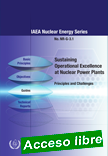 |
Sustaining Operational Excellence at Nuclear Power Plants
IAEA Nuclear Energy Series No. NR-G-3.1 ¦ English ¦ STI/PUB/2014 ¦ 29 pages ¦ Date published: 2022
Complementing existing standards and guides on the operational excellence of nuclear power plants, this publication supports leaders of owner/operating organizations by providing strategic responses to current business challenges and effective measures to sustain high performance levels. The publication considers activities that are under the control of the owner/operating organization as well as those that involve interaction with other stakeholders such as regulatory bodies, industry peers, international organizations, policy makers and academia.
|
.
|
 |
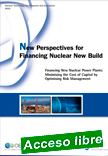 |
New Perspectives for Financing Nuclear New Build: Financing New Nuclear Power Plants: Minimising the Cost of Capital by Optimising Risk Management
OECD. Nuclear Energy Agency ¦ NEA No. 7632 ¦ 2022 ¦ 63 p.
Realising the contribution of nuclear energy to achieving net zero carbon emission in 2050 will require raising significant amounts of capital at competitive rates. On the basis of work under the aegis of the Nuclear Energy Agency (NEA) – International Framework for Nuclear Energy Cooperation (IFNEC) Initiative on Nuclear Financing, this report explores a new framework for analysing the cost of capital for nuclear new build projects.
|
. Its key insight is that capital costs can be substantially lowered if the different risks pertaining to such projects such as construction risk, price risk or political risk are properly understood, optimally managed and fairly allocated. In a carbon-constrained world, the true capital costs of nuclear energy and other low-carbon generators will also be lower than customarily assumed due to their ability to offset systemic financial risk. The findings of this report apply equally to private and public investments. Governments nevertheless have important roles to play in ensuring credible net zero commitments, implementing frameworks for optimal risk management and by becoming involved as project participants, in cases where they judge that private actors do not realise the full value of a nuclear power project.
|
 |
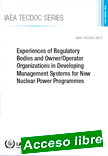 |
Experiences of Regulatory Bodies and Owner/Operator Organizations in Developing Management Systems for New Nuclear Power Programmes
IAEA-TECDOC-2013 ¦ English ¦ 100 pages ¦ Date published: 2022
Management systems play an important role in the success of a nuclear power programme. Recognizing that their development poses a number of questions, this publication aims to share experiences of regulatory bodies and owner operator organizations in developing management systems consistent with the main activities planned from inception of these organizations to construction of a nuclear power plant, whilst prioritizing safety.
|
.
|
 |
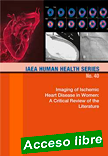 |
Imaging of Ischemic Heart Disease in Women: A Critical Review of the Literature
IAEA Human Health Series No. 40 ¦ English ¦ STI/PUB/1970 ¦ 45 pages ¦ Date published: 2022
This publication examines the special characteristics of the pathophysiology of coronary artery disease (CAD) and its clinical presentation in women, which differ from those of men. While coronary obstruction and multi-vessel disease are more common in men, non-ischemic heart disease (IHD) best encompasses the spectrum of the disease in women.
|
The publication provides a critical review of the existing literature, covering some general aspects of the disease as well as how to make a diagnosis/prognosis of IHD, both clinical and by means of cardiac imaging. The specific situation of cardiac imaging in the management of IHD in low- or middle- income countries is surveyed. In addition, reference is made to cardiotoxicity and radiotherapy-induced disease in breast cancer.
|
 |
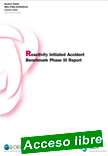 |
Reactivity Initiated Accident Benchmark Phase III Report
NEA/CSNI/R(2020)10 ¦ English ¦ Nuclear Energy Agency/OECD ¦ October 2022 ¦ 83 pages
Following the recommendations from the technical workshop on “Nuclear Fuel Behaviour during Reactivity-Initiated Accidents” organised by the Nuclear Energy Agency (NEA) in September 2009, a first benchmark of the RIA fuel codes was organised between 2010 and 2013. A second phase of the benchmark was launched in 2014, and the reports resulting from these activities were approved by the Committee on the Safety of Nuclear Installations in 2015 and 2016.
|
One recommendation from Phase II of the benchmark was to launch a complementary phase focused on uncertainty and sensitivity analyses on an irradiated case in order to identify the corresponding influential input parameters. In particular, the impact of the initial state and key models on the results of the transient needed to be investigated and a sensitivity study needed to be performed in order to identify or confirm the most influential input uncertainties. This report presents the conclusions from the uncertainty analysis and recommendations for future work.
|
 |
| |
|
|

|
|
|
| |
|
|
| |
| |
|
|
| |
| |
|
|
| |
| |
|
|
|
| |
| |
